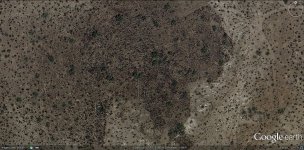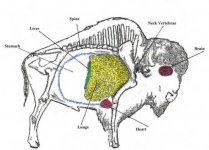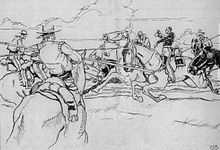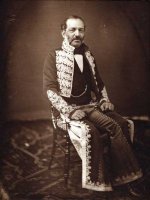JackH
Full Member
- Thread starter
- #181
Hi Jack
The picture with a Bull which you posted , I gave a better look and I saw many suspicious things . Around the Bull hill are many roads , and on east of the hill are two parallel roads , which in my opinion are to facilitate movement in both directions . Bellow the Bull's belly , two roads ( like triangle ) joined under a big tree . In this junction may be a mine entrance .
Maybe in the past , there was a gold or silver source . Maybe the bull icon on the coin was not coincidence .
Marius
Marius,
The two roads (like a triangle) meet at the top of the Hill. I believe this is the Palo Verde tree Waltz described on his death bed.
A hundred years later, the two roads joined under a big tree. Notice the Big tree is missing a piece, like a pie.
Quote:
In this junction may be a mine entrance .
Marius, I believe this is the site of Waltz's cache', or one of them. It is on the way back to Phoenix, from Red Mountain, somewhat
halfway back.
The Reservation found something, as why so much dirt was moved, but they did not find enough of it ! Based on what Waltz spent.
Jack










